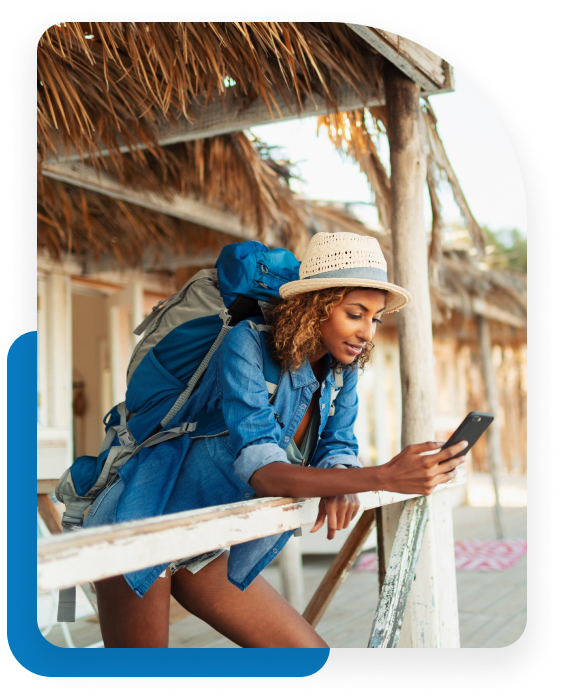Find the Perfect Coverage for Your Trip
Take your travel experience to the next level with customized insurance.
5 Good Reasons to Buy Travel Insurance

Travel with confidence
Benefit from our global expertise.

Be prepared for anything
We’ve got you covered for life’s unexpected moments.

Experience your favourite adventures
We offer coverage for a wide range of exciting sports and tourist experiences.

Get help anytime
We offer a 24/7 travel assistance service.

Keep your budget in check
Minimize expenses in the event of unexpected situations or medical emergencies.
More Reasons to Choose Ontario Blue Cross

Making a Difference
Join us in giving back to the community.

A Trusted Leader
Rely on over 80 years of insurance expertise.

Enhancing the Experience
Take control of your insurance.


Take Control of Your Travel Insurance
With your Customer Space, managing and personalizing your travel insurance has never been easier.
- Access your insurance policy anywhere, anytime
- Add or remove travellers
- Extend your trip coverage
- Adjust your travel dates
Prenez le contrôle de votre assurance voyage
Avec l'Espace client, gérer et personnaliser votre assurance voyage est plus accessible que jamais.
-
Accédez à votre assurance partout, en tout temps
-
Ajoutez ou retirez un voyageur
-
Achetez une prolongation voyage
-
Changez les dates de votre voyage
Frequently Asked Questions
While provincial health insurance may cover some medical expenses when travelling to other provinces, there are often limitations and exclusions, such as coverage for ambulance services, repatriation, or prescription medication costs. To ensure comprehensive coverage for your domestic trip, it’s highly recommended to purchase additional travel insurance.
A pre-existing medical condition refers to any illness or condition that existed before your departure. To be covered, your condition must remain stable for a specific period outlined in your policy, which varies based on your age. You may also have the option to shorten this period by selecting the Option: Reduced Stability Period. For more details, please refer to our blog or contact one of our agents.
Travel insurance must be purchased before you leave your province of residence and should cover the entire duration of your trip.
If your trip is extended, you can update your return date and pay for the additional days through your Customer Space or by calling us. Make sure to do this before your current contract or coverage expires.
Yes, unless you’re unable to do so. Our 24/7 assistance team is here to guide you to the best possible care. In case of a medical emergency, you must contact Blue Cross Travel Assistance immediately. Failure to do so before receiving treatment may result in your claim being denied. If you’re unable to contact us beforehand, seek care at the nearest clinic or hospital and call us as soon as possible to open your assistance file.
Yes, you can reach us toll-free or by calling collect during your trip using the following numbers:
- From Canada or the United States: 1-800-361-6068
- From anywhere else in the world (call collect): 514-286-8411
This insurance is for individuals not covered by a public health insurance plan. It is available to immigrants, permanent residents awaiting public health coverage, foreign workers, students, Canadian citizens returning after time abroad, Super Visa applicants and holders, and visitors to Canada.
Yes, you can purchase our Visitors to Canada insurance within 30 days of your arrival. If you are currently covered by a similar insurance plan from another provider, contact us before your coverage ends to purchase Blue Cross coverage.
Yes, Visitors to Canada insurance is available to individuals aged 79 and under.
Yes, we offer Visitors to Canada insurance that meets Super Visa requirements, with coverage options of $50,000, $100,000, or $150,000.
Yes, trips outside of Canada are covered as long as they meet the following criteria:
- The trip must begin and end in Canada.
- It must occur entirely within the coverage period.
- It must not exceed 30 days.
- It cannot take place in your country of permanent residence.
Additionally, the total duration of all trips taken outside Canada during the coverage period must not exceed 49% of the contract duration.

